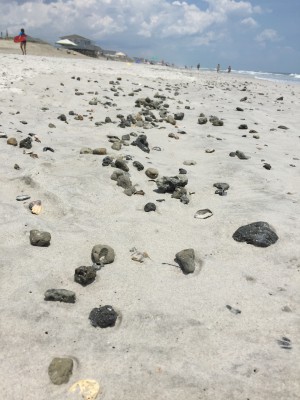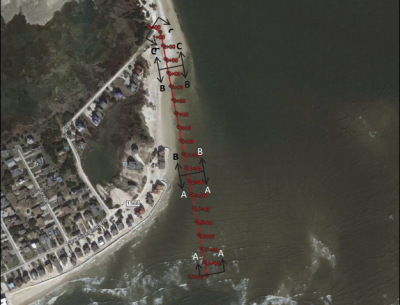NORTH TOPSAIL BEACH – The outgoing town manager here urged aldermen Wednesday to avoid borrowing sand from offshore sites to prevent the possibility of pumping more rocks onto the beach.

The manager, Stuart Turille, whose last day is Jan. 1, presented aldermen with a handful of options on how to proceed with a beach-wide nourishment and maintenance plan. But he made his opinion clear during a special meeting Wednesday morning that pumping sand from the offshore borrow site the town is permitted to use is cost prohibitive and should be tapped only in an emergency.
Supporter Spotlight
The special meeting was called to discuss the town’s shoreline protection strategy, consider adoption of a resolution opposing a statewide property insurance rate increase and the appointment of an interim town manager.
Turille recalled writing checks to cover the cost of removing tons of rocks inadvertently injected onto part of a 1.5-mile section of beach that was re-nourished at the southern end of town.
Winter storms in early 2015 uncovered the rocks weeks after “phase five” of the town’s shoreline protection project had begun.
The town’s engineers said core samples taken in the borrow site did not indicate a concentrated amount of rock within that area of Onslow Bay, which has an abundance of rock bottom.
The U.S. Army Corps of Engineers has its own set of designated borrow sites in Onslow Bay. Town officials briefly discussed the possibility of using a Corps’ site, but they questioned the plausibility of that site being rock free.
Supporter Spotlight
The town needs 715,000 cubic yards of sand to complete phases two, three and four of its shoreline protection plan.
Under permit requirements, coarse sand must be pumped onto the beach in the areas of phase two and phase four, which are deemed hard-bottom areas.

Sand from the inlet is beach compatible, Turille said, but the town will have to seek a permit modification if it wants to put that sand on hard-bottom areas of the beach.
Turille presented four options for moving forward with the shoreline project.
His preference for the town is to request regulatory agencies modify the current New River Inlet navigation permit to expand dredging of Cedar Bush Cut in order to use it as a borrow site for phase two.
As part of this option, the town would also request a permit modification to tap a sand source referred to as DA-143, a spoils island the Corps uses to dispose of sand dredged from the inlet. Sand for phases three, which does not require hard bottom, and four would come from that site.
DA-143 contains 2 million cubic yards of sand.
“You can do all that sand through phases two through four, but you have to overcome the permit modification hurdle to put on hard-bottom areas,” Turille said. “That permit is nearly done.”
If the town is not granted a modified permit to borrow from Cedar Bush, Turille suggests the second option, which is using sand from the spoils island throughout the entire project area.
Should a permit modification to use sand from DA-143 be rejected, Turille then suggests the town move ahead with building a hardened structure at the north end while pursuing permits to pump from DA-143 into phase areas three and four. Once the structure is complete, the town could then remove sand from the ocean bar to compete phase 2.
The cost of the options Turille presented range between $18 million and $27 million. Roughly half of the cost would be covered by various federal and state grants.
“Whichever option you select, you’re going to have to come up at a minimum with a total of $11 million,” Turille said. “In the realm of beach nourishment that’s an achievable number if we can reach it.”
Turille urged the board to keep beach re-nourishment on the front burner and not let the board’s pursuit to build a hardened structure on the north end distract it from completing all of the phases of beach re-nourishment.

The town is hatching a plan to build a structure to mitigate beach erosion at the north end. The town board hosted a meeting last month in which representatives from Onslow County attended to discuss structure options.
The county’s interest is in maintaining the inlet channel for navigation, a point county officials made clear during that meeting.
County commissioners in July 2016 agreed to a $250,000 match to North Topsail Beach to pay for an Environmental Impact Statement, or EIS, examining the effects of inlet- and shoreline-stabilization alternatives.
In the November meeting, Turille said the town’s “number one purpose and need is navigation.”
Turille submitted a letter of resignation to the town Dec. 1, indicating he had met all the goals made for the town in the past year and that it is time for a change.
He has been the town’s manager since April 2013.
The town board on Wednesday unanimously voted to hire Steve Foster as interim town manager. Foster is a former manager of North Topsail Beach, serving in that capacity from early 2010 through the fall of 2012.








